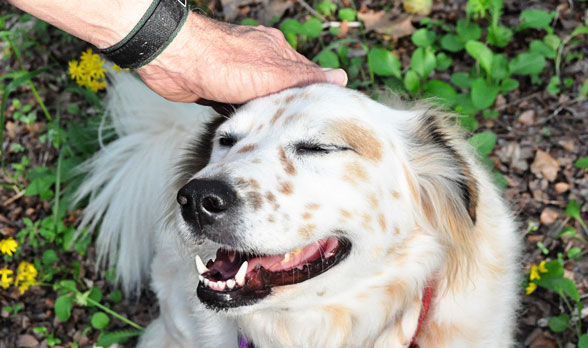
[1]
CT afferents sense pleasant touch
Unmyelinated afferents responding to light touch were first described in furry animals in 1939. In humans, a similar type of afferents was identified about 50 years later (CT, C tactile).
…the role of CT afferents… is to boost the feeling of pleasantness when touched by a friendly human being.
CT afferents are substantially more responsive to an initial touch stimulus than to succeeding stimuli. It may be speculated that the system is designed to make us more inclined to appreciate a friendly touch when first perceived.
The system would be of significance in supporting feelings of pleasure (reward), confidence, comfort, and security as you are close to your parents, lover, kin, or friends. Moreover, it may have a role in hormonal responses as well as in bonding individuals emotionally together.
Pleasant touch feels best at body temperature
… afterdischarge in CT afferents is highly dependent on temperature, as it is more frequent and more prominent at lower than neutral temperatures. In a sample of 15 CT units, afterdischarge was seen in 80 % at 15 °C, but in only 13 % at… 32 and 42 °C…
… subjects’ feelings of pleasantness were optimal when the temperature of the moving object was neutral…
Pleasant touch is stronger when it’s closer in
CTs are abundant in the hairy skin of the human body, scarcer in the distal parts of the extremities and seem to be lacking altogether in the glabrous skin.
The pad skin of furry animals which is the homologue of human glabrous skin was primarily designed to take the wear and tear of walking and running.
Pleasant touch feels best when it’s soft
For slow to medium-velocity touch in the left graph, soft touch (open circles) and harder touch (filled circles) produced nearly the same CT response impulse rate. Even so, for slow to medium-velocity touch in the center graph and in the right graph, soft touch was rated as much more pleasant.

Pleasant touch feels best when it’s slow
… human CT afferents are tuned to a relatively slow speed of movements across the skin…
…in CT afferents maximal rate occurs at a fairly low speed (about 1–3 cm s −1 [0.4 to 1 inch per second]) which corresponds fairly well to human caressing movements.
… subjects’ estimates of pleasantness… are similarly tuned to the speed of movement…
… a prominent and sometimes long-lasting afterdischarge is seen in CTs…[2]
- Minette. “Not all Dogs Like Being Petted.” 12 Nov. 2012, http://www.thedogtrainingsecret.com/blog/dogs-petted/. Accessed on 5 Nov. 2016.
- Vallbo, Åke, Line Löken, and Johan Wessberg. “Sensual Touch: A Slow Touch System Revealed with Microneurography.” Affective Touch and the Neurophysiology of CT Afferents. Springer New York, 2016. 1-30.